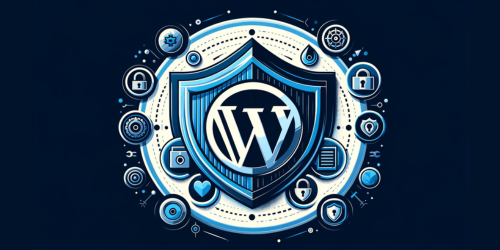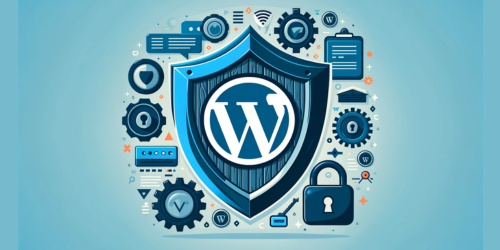Have you ever wondered why some websites feel like they’re racing on a Formula 1 track, while others seem stuck in a traffic jam? That’s the power of website speed, a critical player in the digital user experience and a vital component for effective Search Engine Optimization (SEO). In this digital age, where patience runs thin, and attention spans are shorter, a speedy website isn’t just a luxury; it’s a necessity.
In this guide, we’ll embark on a journey, navigating the twists and turns of optimizing WordPress speed, and guess what? We’ll do it without the crutch of plugins. From server intricacies to front-end adjustments, we’re covering it all, ensuring that your WordPress site isn’t just fast; it’s lightning-fast. So, buckle up, and let’s turbocharge your website into a speed demon that not only delights users but also charms search engines.
Key Take-Aways:
- Effective WordPress speed optimization goes beyond plugin usage and involves several technical and strategic approaches.
- Focus on server and hosting optimization, image and media file compression, and efficient use of web technologies.
- Address both front-end and back-end aspects to ensure comprehensive performance improvement.
1. Choosing the Right Hosting
Selecting the right hosting is akin to setting the foundation of a building. It’s pivotal. The speed and performance of your WordPress website are significantly influenced by your hosting choice. Shared hosting, while cost-effective, often falls short in performance due to shared resources.
On the other hand, managed WordPress hosting is tailored for WordPress efficiency, and Virtual Private Server (VPS) hosting offers greater control and resource allocation. Consider the speed and reliability offered by top hosting providers, ensuring your website runs on a robust and speedy platform.
2. Optimizing Server and Hosting Settings
The server environment is a key player in your website’s speed. Ensure your site runs on the latest PHP version, bringing noticeable performance boosts. Utilize browser caching and Gzip compression to minimize load times and data transfer.
Additionally, pruning unnecessary server features like XML-RPC and heartbeat API helps reduce potential security vulnerabilities and resource wastage. Find more about optimizing server settings on WordPress’s official documentation.
3. Optimizing Website Code and Structure
The structure of your WordPress site plays a crucial role in its speed. Start by removing unnecessary elements such as query strings, RSD links, and emoticons, which add little value. Limiting or disabling post revisions prevents database bloat. Also, smartly reduce HTTP requests and move JavaScript to the footer to improve load times. These strategic changes streamline your site’s code, making it leaner and faster.
4. Image and Media File Optimization
Images and media files are often the culprits of slow website speeds. Embrace image compression and modern formats like WebP for visuals that pop without the lag. Tools like Adobe Photoshop and TinyPNG are excellent for this purpose. For videos and audio, consider compression with software like HandBrake and Audacity, maintaining quality while ensuring faster loading times.
5. Design and Theme Optimization
The choice of your WordPress theme is more than just aesthetics; it’s about speed. Opt for themes that are inherently speed-optimized. Streamline your homepage, minimizing resource-heavy elements like large images or complex animations. Neve and Astra are examples of themes that blend design and speed efficiently. Also delve into Free WordPress Themes for more insights.
6. Ensuring Efficient Use of WordPress Features
Efficiency is key in WordPress management. Disable unused plugins and dashicons to lighten the load. Carefully manage WordPress embeds and shortlinks to avoid unnecessary bloat. This approach ensures that your WordPress site uses only what it needs, contributing to a faster, more responsive site.
7. Monitoring and Measuring Website Performance
After implementing these optimizations, measuring results is critical. Tools like Google PageSpeed Insights and GTmetrix are invaluable for performance analysis, offering actionable insights. Regular monitoring and fine-tuning ensure your WordPress site maintains peak performance over time, adapting to new content and changing web dynamics.
8. Conclusion: Integrating Speed Optimization Techniques
In the realm of WordPress, speed is king, and achieving it requires a holistic strategy. Integrating the techniques discussed—from careful hosting selection to optimizing code and media—creates a synergistic effect that significantly boosts site performance.
Remember, this is not a one-time fix; ongoing monitoring and adjustments are essential for sustaining high-speed, high-performance websites. Keep refining, keep testing, and watch your WordPress site soar.
9. FAQ Section
Q: How do I speed up a WordPress website?
A: Speed up your site by optimizing images, using caching, minimizing plugin use, optimizing CSS and JS files, and choosing efficient hosting. For more insights dive into Speed up you WordPress Site for optimal performance.
Q: How can I optimize my WordPress site speed for free?
A: Optimize for free by using built-in WordPress features like image compression, employing free caching plugins, and optimizing your website’s theme and database.
Q: How to increase WordPress website speed in mobile without plugin?
A: Increase mobile speed by optimizing images, minimizing redirects, leveraging browser caching, and using a responsive, mobile-friendly theme.
Q: Why is my WordPress site so slow?
A: Common reasons include heavy themes, too many plugins, large images, poor hosting services, and not using caching. To get more insights delve into the causes of slow WordPress Editor.



